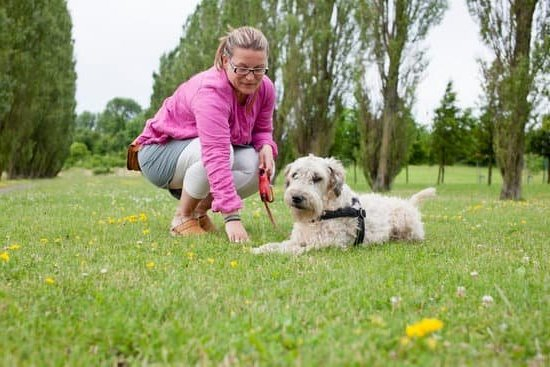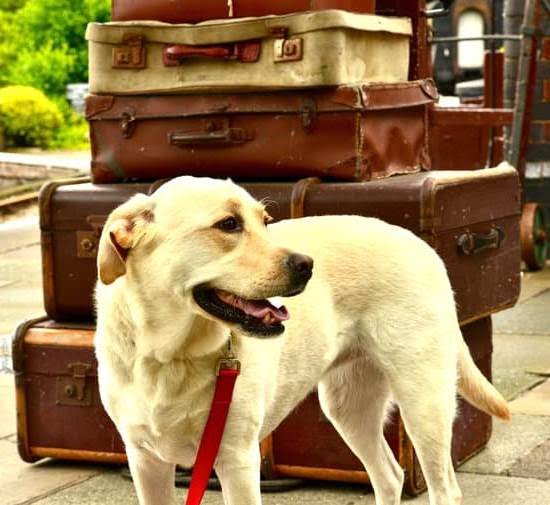How do police officers trained police dogs to assist them in law enforcement? The use of police dogs in law enforcement has a long and storied history, dating back to ancient times. Throughout history, the roles and responsibilities of police dogs have evolved, making them invaluable assets to police officers. This section will delve into the origins of police dogs and their historical significance in law enforcement.
Police dogs have been utilized by law enforcement agencies for centuries, with records indicating their presence as early as ancient civilizations such as Egypt, Greece, and Rome. These early instances of using dogs in policing involved tasks such as tracking and guarding, laying the foundation for the roles that police dogs fulfill today.
The relationship between police officers and their K9 partners is built on trust, loyalty, and mutual support. Police dogs play a crucial role in assisting law enforcement by performing tasks such as tracking suspects, detecting narcotics or explosives, searching for missing persons, and apprehending individuals when necessary. The evolution of these tasks over time has led to specialized training methods to ensure that police dogs are equipped with the necessary skills to carry out these duties effectively.
The Importance of Police Dogs in Law Enforcement
Police dogs play a crucial role in assisting police officers in their work, providing valuable support and enhancing the effectiveness of law enforcement operations. These highly trained canines are deployed to perform a variety of specific tasks that aid officers in their duties. Here are some of the important tasks and roles that police dogs play in law enforcement:
1. Tracking: Police dogs are trained to use their keen sense of smell to track and locate missing persons, suspects, or evidence at crime scenes. They can follow scents over various terrains and conditions, helping law enforcement agencies find individuals or objects that may be difficult to locate by other means.
2. Searching: Another essential task performed by police dogs is conducting searches for narcotics, explosives, or other illicit substances. Their powerful sense of smell enables them to detect hidden drugs or explosives in buildings, vehicles, luggage, and other concealed locations.
3. Apprehension: In high-risk situations, police dogs are trained to apprehend fleeing suspects while protecting their handler. With extensive training in bite work and apprehension techniques, these K9s provide a valuable tool for safely subduing dangerous individuals.
4. Crowd Control: Police dogs can also be used to assist with crowd control and public order maintenance during large events or demonstrations. Their presence often serves as a deterrent, and they can also help disperse crowds when necessary.
Overall, the contribution of police dogs in law enforcement cannot be overstated. Their unique skills and abilities complement the work of police officers, enabling them to carry out their duties more effectively while also serving as valuable assets in ensuring public safety.
Breed Selection and Training
When it comes to choosing the right breed of dog for police work, police officers take into consideration a variety of factors. The physical and behavioral traits of the dog are crucial in determining its suitability for police work. Typically, breeds such as German Shepherds, Belgian Malinois, and Labrador Retrievers are commonly chosen for police work due to their intelligence, strength, agility, and trainability.
The selection process begins with evaluating the desired traits in a potential police dog. These include keen senses, strong food or toy drive for motivation, sociability with people and other animals, confidence, and the ability to learn and perform tasks efficiently. Once a breed is selected based on these criteria, the training process can begin.
Training police dogs is a rigorous process that involves obedience training, agility training, socialization with people and other animals, tracking skills development, detection training (such as narcotics or explosives detection), search techniques, and apprehension work. It is essential for officers to carefully assess each individual dog’s abilities and tailor their training program accordingly in order to maximize the dog’s potential to be an effective member of the law enforcement team.
Ultimately, by carefully selecting breeds with specific physical and behavioral traits conducive to police work and implementing thorough training programs tailored to individual dogs’ abilities, police officers can ensure that they have reliable K9 partners capable of carrying out various tasks in law enforcement effectively. This selection process ensures that only the most suitable dogs are chosen for this demanding role within law enforcement agencies.
Basic Training for Police Dogs
When it comes to training police dogs, the foundational training is crucial in preparing these four-legged officers for their duties in law enforcement. This training includes a variety of components such as obedience, agility, and socialization, all of which are essential for shaping a well-rounded and effective police dog.
Obedience Training
One of the key aspects of basic training for police dogs is obedience. This involves teaching the dog to respond promptly and reliably to commands from their handler. This can include basic commands such as sit, stay, come, and heel, as well as more advanced commands that are specific to police work. Obedience training helps ensure that a police dog can be controlled in various situations and environments, allowing them to work effectively alongside their human counterparts.
Agility Training
In addition to obedience, agility training is also an important component of basic training for police dogs. Agility training helps to enhance the physical abilities of the dog, improving their strength, speed, coordination, and flexibility. This is particularly important for police dogs who may need to navigate challenging terrain or obstacles while carrying out their duties in the field.
Socialization
Socialization is another critical aspect of foundational training for police dogs. Proper socialization helps ensure that the dog is comfortable and confident in various social settings and can interact appropriately with other people and animals. This is essential not only for the well-being of the dog but also for their effectiveness when working in public spaces or alongside other individuals during law enforcement operations.
Specialized Training for Police Dogs
Tracking
Police dogs undergo extensive specialized training in tracking to assist officers in locating missing persons, fugitives, or suspects. This training involves teaching the dog to follow a specific scent trail and track it over various terrains and conditions. Handlers use various methods to train their dogs, including scent discrimination exercises and simulated search scenarios.
Searching
Another crucial aspect of specialized training for police dogs is search work. This includes searching for narcotics, explosives, or evidence at crime scenes. Dogs are trained to use their sense of smell to locate hidden items, and handlers provide them with specific cues and commands to indicate when they have found something. The training for search work also involves obedience and control exercises to ensure that the dogs can effectively perform their tasks in different environments.
Detection Work
Police dogs are often trained for detection work, such as sniffing out drugs, explosives, or firearms. This specialized training focuses on developing the dog’s ability to detect these substances through scent recognition. The dogs learn to alert their handlers when they detect the odor of the target substance, which is essential for law enforcement operations involving these materials.
Apprehension
In some cases, police dogs receive specialized apprehension training to assist officers in subduing suspects who may be resisting arrest or posing a threat. This type of training involves teaching the dog how to safely apprehend and hold a suspect until officers can take control of the situation. Apprehension training requires a high level of control and discipline from both the dog and its handler.
Overall, specialized training for police dogs is tailored to prepare them for the specific tasks they will perform in law enforcement operations. Through rigorous and focused training regimens, these K9 units become invaluable assets in supporting police officers in carrying out their duties effectively.
Handler and K9 Relationship
One of the most crucial aspects of police dog training is the establishment of a strong bond and partnership between the handler and their K9 partner. This relationship goes beyond simply working together; it is based on trust, communication, and mutual respect. Police officers who are assigned a K9 partner undergo specific training to learn how to effectively work with their canine counterparts.
When it comes to training police dogs, handlers use techniques that focus on building a strong connection with their K9 partners. This includes spending quality time together both on and off duty, engaging in interactive play, and using positive reinforcement methods to foster a sense of cooperation and teamwork. By developing a close bond, police officers can effectively communicate with their police dogs in high-pressure situations, ensuring that they work together seamlessly in the field.
In addition to building a close relationship with their K9 partners, police officers also undergo extensive training to understand the behavioral cues and body language of their canine companions. This knowledge allows them to interpret their dog’s responses accurately and make informed decisions while working together in various law enforcement scenarios.
Ultimately, the handler and K9 relationship is at the core of successful police dog operations, as it forms the foundation for effective collaboration and mutual support between law enforcement officers and their trusted four-legged colleagues.
| Handler-K9 Relationship Techniques | Benefits |
|---|---|
| Positive reinforcement methods | Builds trust and cooperation |
| Interactive play and bonding activities | Fosters a strong partnership |
| Behavioral cues interpretation training for handlers | Promotes effective communication during operations |
Use of Positive Reinforcement and Rewards
The use of positive reinforcement and rewards is a crucial aspect of training and motivating police dogs. Police officers utilize various methods and techniques to ensure that their K9 partners are motivated, responsive, and effective in carrying out their tasks in law enforcement. Positive reinforcement involves rewarding desired behaviors to encourage the dog to repeat those actions, while also strengthening the bond between the dog and its handler.
One common method used by police officers to train and motivate police dogs is through the use of food rewards. Dogs are often highly food-motivated, making treats an effective tool for reinforcing good behavior during training sessions. By using small food rewards, handlers can positively reinforce desired behaviors such as obedience, agility, scent detection, and apprehension work. This type of reward-based training helps police dogs associate certain actions with positive outcomes, leading to improved performance in the field.
In addition to food rewards, police officers also use toys and play as a form of positive reinforcement for police dogs. Many working breeds have a strong prey drive and enjoy playing with toys such as balls or tug ropes.
Handlers may use these toys as rewards during training exercises or as a way to keep their K9 partners engaged and motivated while on duty. Playtime can be an effective way to maintain a positive relationship between the handler and the police dog while providing mental stimulation and exercise for the animal.
| Training Method | Description |
|---|---|
| Food Rewards | Small food treats used to reinforce good behavior during training sessions |
| Toys and Play | Use of toys such as balls or tug ropes as rewards or for mental stimulation during training and on duty |
Continuing Education and Development
In conclusion, police officers play a crucial role in the training and development of police dogs to ensure their skills and effectiveness in the field. The selection of the right breed, foundation training, specialized tasks training, and the unique bond between handler and K9 are all essential components in producing highly trained police dogs.
Through positive reinforcement and rewards, police officers are able to motivate and encourage their K9 partners to perform at their best. Additionally, the ongoing education and development of police dogs is vital in maintaining their skills as they continue to serve alongside their handlers.
It is fascinating to learn about how police officers select and train the right breeds of dogs for police work. The physical and behavioral traits that are required for police dogs are carefully considered during breed selection to ensure that they are well-suited for law enforcement tasks such as tracking, searching, detection work, and apprehension. Furthermore, through continuous training and development, these skills can be maintained at a high level throughout the dog’s career.
The partnership between police officers and their K9 companions highlights the unique bond that exists between them. This relationship is critical in ensuring effective teamwork in various law enforcement activities. Throughout history, police dogs have proven to be indispensable assets in supporting the work of law enforcement agencies across the world. Their ongoing training and development ensure that they remain reliable allies for officers on duty.
Frequently Asked Questions
How Are Dogs Trained to Be Police Dogs?
Dogs are trained to be police dogs through a rigorous process that includes obedience training, searching for narcotics, tracking suspects, and apprehending criminals. They undergo intensive physical and mental conditioning to prepare them for their roles in law enforcement.
What Happens in Basic Training for Police Dogs?
Basic training for police dogs involves teaching them basic commands such as sit, stay, heel, and come. They also receive training in agility and endurance to navigate various terrains and obstacles during their duties. Additionally, they are introduced to detecting scents like drugs or explosives.
How Are Police Dogs Disciplined?
Police dogs are disciplined through positive reinforcement techniques such as praise, treats, or playtime when they successfully complete tasks. Consistency is key in their training, and corrections are made using non-violent methods to ensure the dog maintains a high level of focus and obedience while on duty.

Welcome to the blog! I am a professional dog trainer and have been working with dogs for many years. In this blog, I will be discussing various topics related to dog training, including tips, tricks, and advice. I hope you find this information helpful and informative. Thanks for reading!





